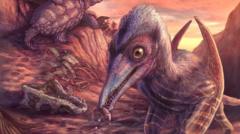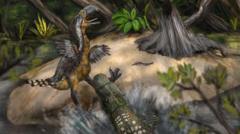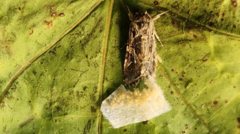The jawbone of a newfound species of pterosaur, a flying reptile that roamed the skies during the age of dinosaurs, has been uncovered in Arizona. Identified as Eotephradactylus mcintireae, translating to "ash-winged dawn goddess," this specimen is estimated to be around 209 million years old and is recognized as the earliest pterosaur found in North America.
The fossils, discovered in a desert region within the Petrified Forest National Park, were notably preserved in volcanic ash in an ancient riverbed. The research, conducted by a team from the Smithsonian's National Museum of Natural History, emphasizes the significance of understanding ancient ecosystems. Dr. Ben Kligman of the research team highlighted the rarity of finding such remains, noting that the delicate bones of Triassic pterosaurs are often destroyed before fossilization can occur.
Published in the Proceedings of the National Academy of Sciences, the findings also suggest the potential for uncovering more pterosaur fossils within similar Triassic deposits globally. Moreover, the pterosaur’s well-worn teeth reveal its diet likely consisted of primitive fish, hinting at its role in the ecosystem of that era.
The fossil bed is a valuable snapshot of a prehistoric world where extinct species coexisted with early forms of life familiar in today’s environment. Dr. Kligman indicated that this discovery offers crucial insights into evolutionary transitions that took place over 200 million years ago, revealing the intricate web of life forms that shared habitats and adapted to changes in their environment. Fossil evidence from this period enhances our understanding of biodiversity and evolutionary history.
The fossils, discovered in a desert region within the Petrified Forest National Park, were notably preserved in volcanic ash in an ancient riverbed. The research, conducted by a team from the Smithsonian's National Museum of Natural History, emphasizes the significance of understanding ancient ecosystems. Dr. Ben Kligman of the research team highlighted the rarity of finding such remains, noting that the delicate bones of Triassic pterosaurs are often destroyed before fossilization can occur.
Published in the Proceedings of the National Academy of Sciences, the findings also suggest the potential for uncovering more pterosaur fossils within similar Triassic deposits globally. Moreover, the pterosaur’s well-worn teeth reveal its diet likely consisted of primitive fish, hinting at its role in the ecosystem of that era.
The fossil bed is a valuable snapshot of a prehistoric world where extinct species coexisted with early forms of life familiar in today’s environment. Dr. Kligman indicated that this discovery offers crucial insights into evolutionary transitions that took place over 200 million years ago, revealing the intricate web of life forms that shared habitats and adapted to changes in their environment. Fossil evidence from this period enhances our understanding of biodiversity and evolutionary history.





















